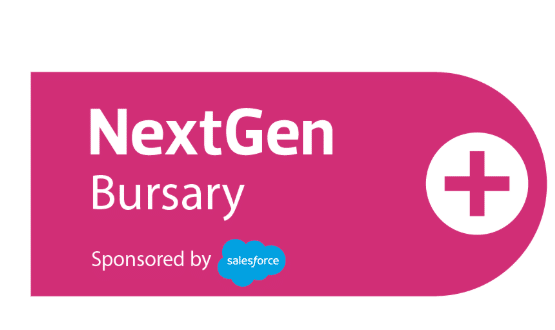Enter the CCG: fall over a system error
- 2 September 2014

Two thoughts went through my head as I started to fall head-first down the stairs in the Cumberland Hotel.
The first was: “Relax: you’ll minimise the damage when you hit the ground,” and the second was: “This is a system error.” Let’s rewind. It’s all about Choose and Book.
Learning from Choose and Book
In 2007, I was appointed to the national clinical reference panel for C&B. At the time, one of my colleagues asked whether I’d get time off for good behaviour, but we’ll gloss over that.
C&B was allegedly invented by Tony Blair, and I’ve been told that it was initially designed with very few clinicians in sight. It shows and, as everybody knows, the system has a terrible reputation among some of its users.
Thankfully, it is being reworked. Last year, the chief operating officer of my clinical commissioning group asked me to apply for a seat on the redesign council. Subsequently, I was also invited to be a member of the programme board.
It’s clear the NHS has learned from its mistakes. The stakeholder design council now includes a large number of clinicians from both primary and secondary care – which means it includes staff who use C&B hands-on, as part of their day-jobs – and NHS managers.
We’ve been working on it intensively for over a year now and, my goodness, what a difference! Nothing is sacrosanct; everything is up for discussion.
Starting over from the code up
The programming has been recreated from the ground up, using a new supplier. As a result, the core program is about a tenth the size of the original, so it is likely to run much more efficiently and be easier to debug.
But that’s only the beginning. All these changes are being done in an agile format, so that as soon as a mistake is discovered it can immediately be fixed.
The altered version can be released immediately (and cheaply), instead of a new release taking months (and large amounts of money) to sort out.
To me, though, the real difference is the concentrated care and attention that has been lavished on the individual screens – and I’m sure that in the long run this is what future NHS users will find most beneficial.
Eventually, a great deal more functionality will be put in – but only in subsequent stages. When the new e-Referral Service is first released in November it will initially look, feel, and behave almost exactly like the old C&B.
It will be neater, sharper, have a more modern look, and fewer ambiguities; but existing users should feel completely at home.
The effect should be like going through your house replacing all the old bulbs with LEDs: everything will work in the same way, but simply look crisper and cleaner.
Then – and only then – will new features be introduced, so that the whole user experience of electronic referrals gradually becomes super-efficient.
System failures
I’m not an IT geek. My specialism is the psychology of the computer-user interface; in other words, what makes programs user-friendly.
I’m in my element with eRS because there’s so much in the original system that needs to be refined!
It’s amazingly easy to send users in the wrong direction. It’s like navigating through an unfamiliar town: only the newcomers need signposts – locals never read them because they already know which route to take.
Yet how often have you driven into a strange town, assiduously following the signs to ‘Town Centre’ until you come to a junction that, somewhat inconveniently, misses out this information?
IT system designers can fall into the same trap: they already know where they’re going. Consequently, they often don’t think in detail about how their instructions might be perceived by someone encountering a screen or a web page for the first time.
This is where consistency helps. It’s so much easier to navigate a program if buttons and tabs are placed consistently.
That can be as simple as making sure that the ‘OK’ button always at the bottom right, an ‘Escape’ button is nearby – and that there is a ‘Back’ button to take you to an earlier screen to correct something you’ve previously entered incorrectly.
The same goes for instructions; they’ve got to be unambiguous. One button in the old C&B is labelled ‘Finish’; but is that a command or a statement?
If it’s a command and you click on it, does the program then perform another highly necessary operation to finish off the processing?
Alternatively, does ‘Finish’ indicate that you’ve already got to the end of the process, so you could just as easily close down the screen using the ‘X’ in the upper right corner, because it won’t abort the procedure you had previously been running?
Things like this can make a huge difference to the usability and reliability of the overall program – and there have been a lot of them in C&B, I can tell you!
Lighting the way?
And so, back to the hotel. As it happens, I was going to an eRS meeting in the downstairs conference suite when I fell.
The stairs are split into two flights, with lines of intense blue lights at the top and bottom of each flight to guide you; so bright that it’s difficult to see their surroundings in the relative gloom.
On the first flight, the lights at the bottom had been placed beyond the last step, on the landing. But on the lower flight, the bottom line of lights was on the outside edge of the last step.
Having learned the ‘meaning’ of the blue lights at the bottom of the first flight of stairs (they show where the floor begins…), at the bottom of the second flight I stepped out boldly. Bad decision.
As I said earlier, the hotel had a system error, and I’d just discovered it. As I lay there face down, checking for fractures and fortunately finding none, I resolved to redouble my efforts to ensure that when the new version of eRS is published it contains as few system errors as possible.
My conclusion? You can design for success as well as for failure. And next time: take the lift.


Dr John Lockley
Dr John Lockley is clinical lead for informatics at Bedfordshire Clinical Commissioning Group and a part-time GP.




